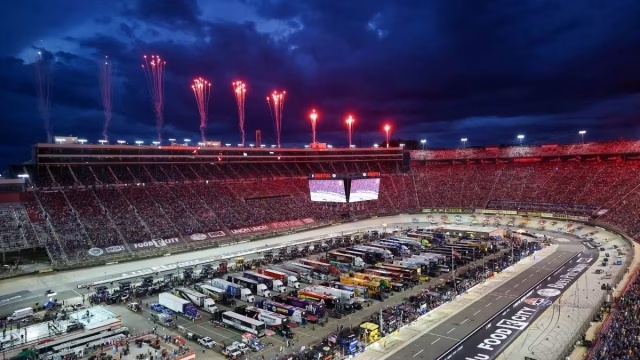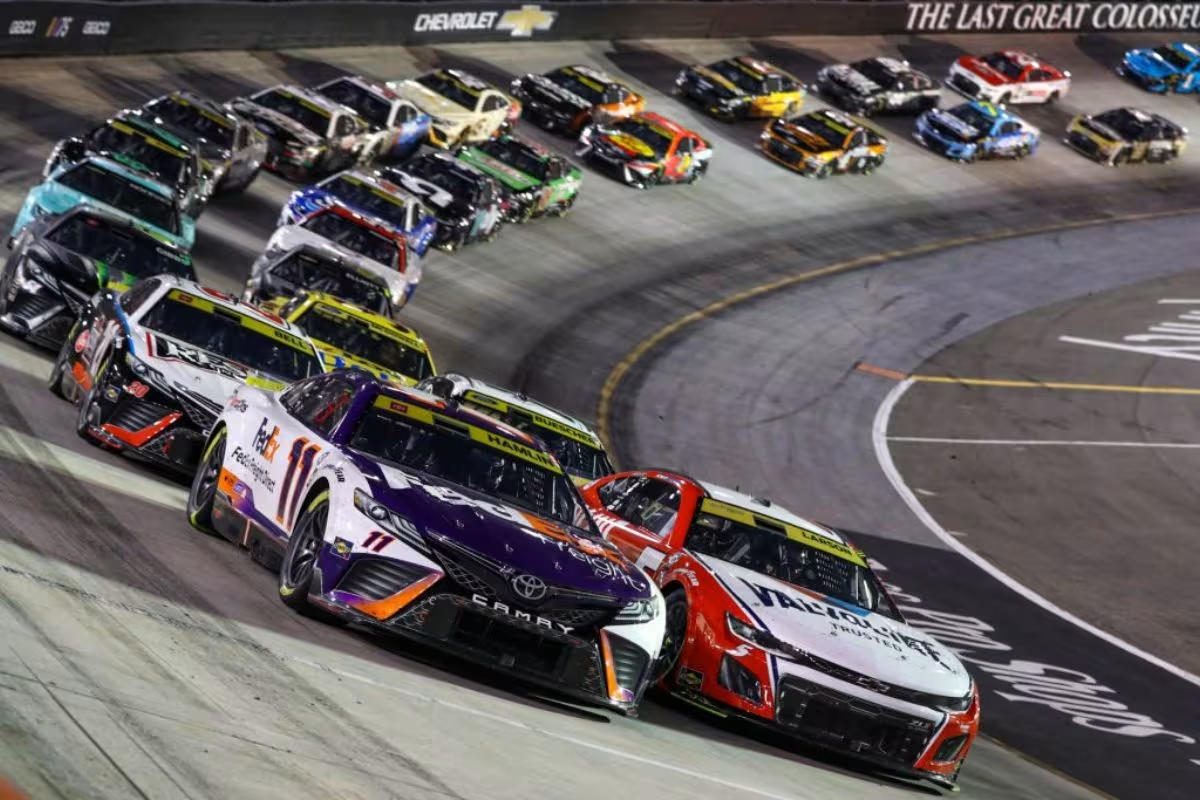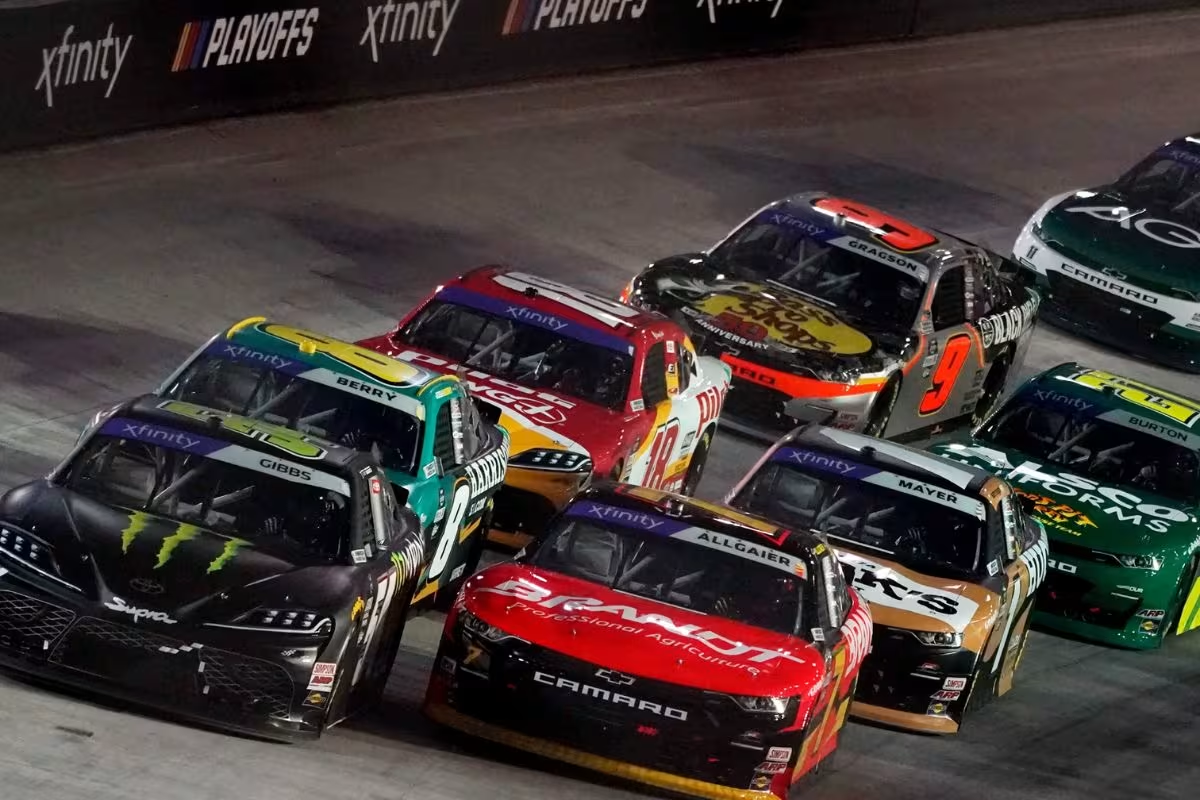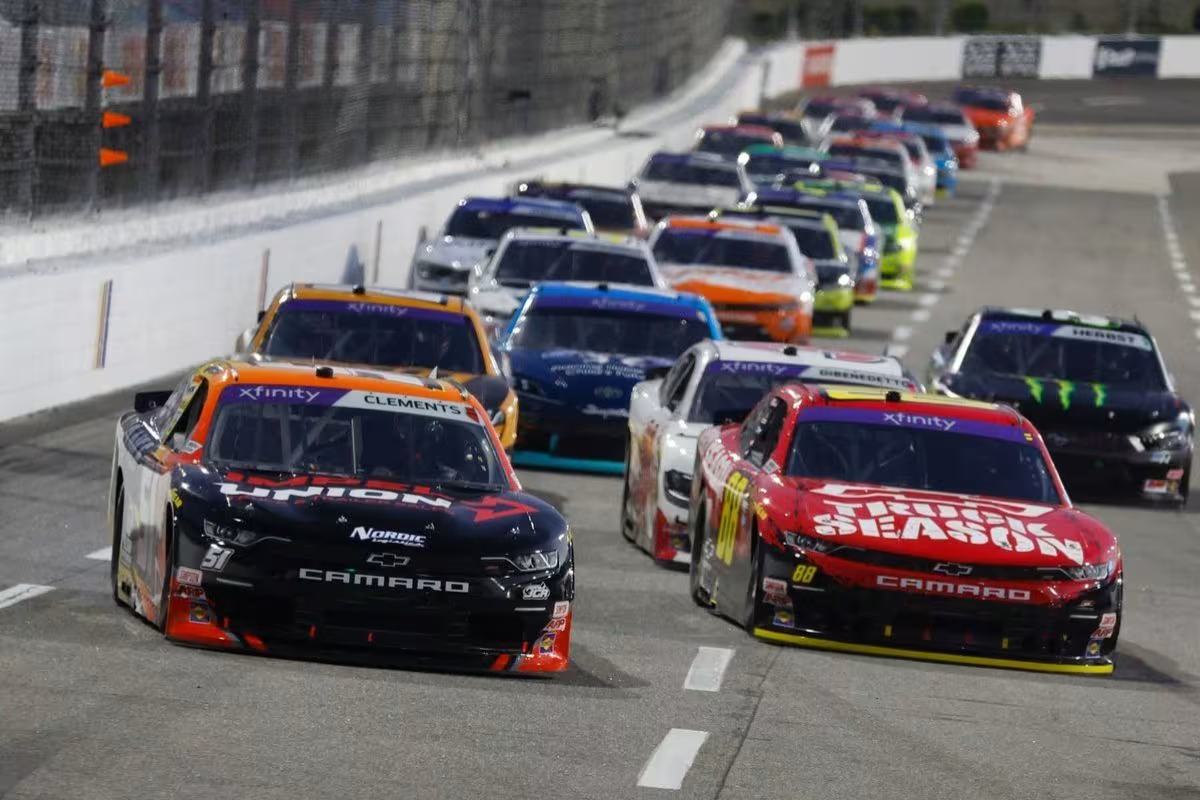Bristol’s Night Race Draws 1.86 Million Viewers: Bristol‘s Night Race, With an impressive 1.86 million viewers, the recent race presents a dilemma worth exploring: even though the viewership numbers show strong interest in NASCAR, fan reactions reveal significant dissatisfaction with the race’s excitement. This gap raises important questions about what truly engages audiences and highlights Bristol’s history as a venue known for thrilling races. As NASCAR works to attract and keep viewers in a changing landscape, understanding why this disconnect exists could lead to key strategies for bringing back the excitement on the track. What does this mean for the future of NASCAR?
Key Highlights
- Bristol’s Night Race attracted 1.86 million viewers, a 300,000 increase from last year, but fan sentiment remains largely negative.
- The race lacked excitement and competitive strategies, leading to a dull viewing experience for many fans.
- Viewership numbers are significantly lower than Bristol’s historical averages, reflecting disappointment amidst evolving motorsport dynamics.
- External factors, such as the NFL season, impact NASCAR viewership, diverting attention from racing events.
- Fans express a desire for thrilling competition similar of NASCAR’s past, raising concerns about the sport’s future engagement.
Bristol Race Overview
The Bristol Motor Speedway consistently captivates NASCAR fans with its unique combination of short track thrills and tactical racing, making it a highlight on the circuit. This iconic venue, known for its step backing and tight corners, traditionally delivers tough action that keeps spectators on the edge of their seats.
Instead of a memorable showdown, viewers experienced a race that felt dull and lacking in the intense action that has historically made the Bristol night race an performance showcase of NASCAR’s thrill. Despite the race attracting an impressive viewership of 1.86 million, the general sentiment among fans was one of dissatisfaction.
The gap between high viewership numbers and fan satisfaction raises concerns about the quality of racing at Bristol. As NASCAR evolves, it’s crucial to ensure that tracks like Bristol attract fans while also providing the thrilling entertainment they expect. If this balance isn’t maintained, even the most famous tracks could lose their dedicated supporters.
Viewership Numbers and Kyle Larson’s Dominance
Kyle Larson’s leading performance at Bristol’s Night Race significantly affected viewer engagement. He moved from second to first and built an impressive 7-second lead. While his skill was impressive, it led to a lack of overtaking and excitement, making the race feel monotonous. Fans who expected the usual drama of a short-track race felt disconnected, highlighting a gap between Larson’s success and the thrilling action fans crave at Bristol.
The viewership numbers reflect a complex relationship between Larson’s performance and audience engagement. Despite the race’s perceived boredom, the event attracted 1.868 million viewers, marking a noteworthy 300,000 increase from the previous year.
While Larson’s dominance was evident, the lack of competitive racing dynamics likely muted the excitement. The rise in viewership numbers indicates a potential curiosity about Larson’s skill but also raises questions about the sustainability of viewership when faced with uninspired racing. Consequently, the implications of Larson’s performance extend beyond mere statistics, hinting at a need for NASCAR to recalibrate its competitive dynamics to improve viewer engagement in future events.
Comparison to Historical Viewership
Bristol’s Night Race brings a mix of nostalgia and comparison as it looks at viewership numbers over the years. Recently, it attracted 1.86 million viewers, which is close to the track’s historical average of 1.9 million. However, this number hides a bigger story, especially when compared to the 2.81 million viewers in 2019, which many considered disappointing for such a famous race.
Fans are unhappy because there is a noticeable drop in viewer engagement over the years. In 2018, even with bad weather and a Monday race, 1.96 million viewers tuned in. Bristol has often surpassed 5 million viewers, a goal that now feels far away.
Although there was an increase of 300,000 viewers from last year, many fans remain doubtful. They believe that changes since the COVID-19 pandemic have reduced Bristol’s appeal. One fan pointed out that the race hasn’t come close to 4 million viewers since before the pandemic, suggesting a longer-term trend rather than just temporary dips.
“That was many years ago. I don’t think this race has had 4 million viewers since pre-Covid.”-(fans’ reaction)
while the latest numbers may seem stable, they reflect a complicated mix of nostalgia and disappointment in a changing motorsport world.
External Factors Affecting Viewership
As the landscape of sports consumption evolves, external factors increasingly influence viewership trends for events like Bristol’s Night Race. One noteworthy factor is the concurrent NFL season, which draws considerable attention from audiences across the nation. With multiple NFL games scheduled on weekends, the overlap with NASCAR events inevitably siphons off potential viewers.
This was particularly evident during the previous race at Watkins Glen, where viewership plummeted to 1.8 million, largely attributed to competing football broadcasts, such as the Bengals vs. Chiefs matchup.
The implications of this competition are profound, as fans express a sentiment that any NASCAR race during the football season will struggle, regardless of the day of the week. A fan’s observation encapsulates this notion. “Any race during the football season is gonna suffer.”
“Any race during the football season is gonna suffer doesn’t matter if it’s on Sundays or Saturdays.”-(fans’ reaction)
This reality poses a challenge for NASCAR, highlighting a considerable concern in scheduling practices that may not adequately consider the dominance of the NFL.
Moreover, the disparity in viewership between Bristol’s Night Race and the more thrilling spring event—3.8 million viewers—suggests that excitement levels are also a critical component in capturing audience interest.
“Any race during the football season is gonna suffer doesn’t matter if it’s on Sundays or Saturdays.”-(fans’ reaction)
The expectation for a tough experience, set by previous races, raises for NASCAR to deliver attractive content.
In this scenario, the external competition and the quality of the racing product become intertwined factors that notably shape viewer engagement and satisfaction, indicating a complex relationship between sport consumption habits and competitive scheduling strategies.
Fan Sentiment and Future Expectations
While many fans celebrated the surge in viewership for Bristol’s Night Race, a deeper analysis reveals concerns about the quality of racing and its impact on the sport’s future. Enthusiasts of NASCAR recognize that the thrill of racing is supreme, and despite Kyle Larson’s historic achievement, the complete competition fell flat.
One fan’s sarcastic remark encapsulated the discontent: “It’s almost like good racing is what drives the sport’s popularity.” This sentiment shows a critical issue; the implementation of PJ1 on the track, intended to improve competition, ultimately backfired, leading to a experience.
“It’s almost like good racing is what drives the sport’s popularity. Shame they squandered it with the race Saturday.”-(fans’ reaction)
Although attracting 1.86 million viewers may seem promising, many fans perceive this as a troubling sign of complacency within NASCAR. The sport, once a powerhouse rivaling the NBA playoffs for viewership, is now grappling to maintain even a two-million viewer threshold.
The glaring realization articulated by one fan—“This sport is worse off than anyone realizes“—the urgency for change.
“This sport is worse off than anyone realizes.”-(fans’ reaction)
As we approach the Round of 12, the pressure mounts for upcoming races to deliver the edge-of-your-seat action fans crave. Expectations have shifted; fans are no longer satisfied with mere viewership numbers but demand a return to the exhilarating competition that once characterized NASCAR.
News in Brief: Bristol’s Night Race Draws 1.86 Million Viewers
Bristol’s Night Race drew 1.86 million viewers, but many fans felt dissatisfied. The strong performance of one driver and the lack of competitive action made the race less exciting than usual. This shows that NASCAR needs to rethink how races are run to boost viewer engagement. Future events should focus on creating thrilling competition to bring back the excitement fans expect, helping to keep interest in the sport alive.
ALSO READ: NASCAR’s Bristol Tire Controversy: Insider’s Blunt Take Leaves Fans Stunned



